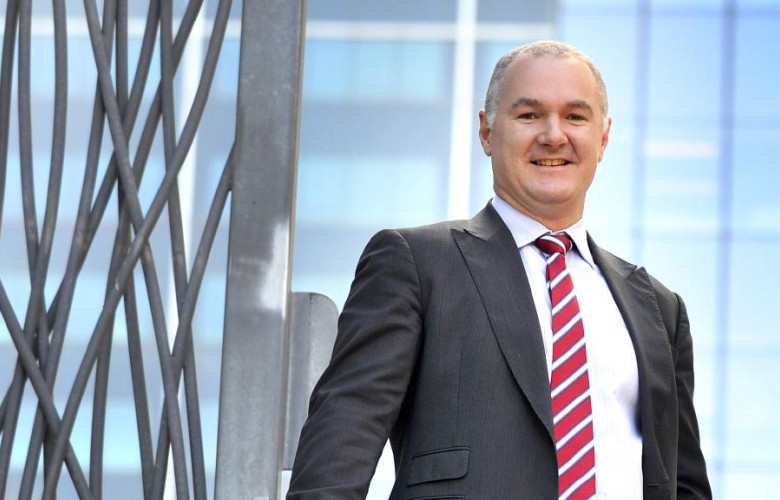Growth in Australian construction costs finally show signs of easing - CoreLogic
Contact
Growth in Australian construction costs finally show signs of easing - CoreLogic
After two years of unabated increases in the price to build a new home or renovation, there are signs pressures on construction costs are easing despite lingering labour shortages and volatility among timber, metal and petrol prices.
After two years of unabated increases in the price to build a new home or renovation, there are signs pressures on construction costs are easing despite lingering labour shortages and volatility among timber, metal and petrol prices.
CoreLogic’s Cordell Construction Cost Index (CCCI), which tracks the cost to build a typical new home, returned a growth rate of 0.9% for the first three months of 2023, a level not seen since March 2021.
The quarterly growth rate was less than half the Q4 2022 figure of 1.9% and a dramatic slowdown compared to the September quarter results of 4.7%.
The annual growth rate of 10.2% eased back from an index high of 11.9% recorded in the 12 months to December 2022, the largest annual increase on record, excluding the period impacted by the introduction of the GST.
CoreLogic Construction Cost Estimation Manager John Bennett said while the national annual growth rate was still relatively high, the building and construction industry would take comfort in the quarterly figure returning more in line with long-term averages.
“The building and construction industry has weathered an unprecedented number of headwinds in the past two years,” he said.
“The extraordinary growth in the index reflects the challenging post-COVID operating period, the rapidly rising rate environment and high inflation levels. These factors only served to amplify volatile pricing caused by restricted domestic supply chains, material and labour shortages.”
He said there had been a gradual easing in the growth of construction costs in the past six months, as demand for materials reduced due to shelved or delayed projects on the back of higher interest rates and weaker consumer confidence.
Mr Bennett said it was the first-time the index quarterly growth rate had slipped below 1.0% since March 2021 and was finally below the five-year average of 1.4%.
“The Cordell costings team found timber prices have softened, however there is still instability in the market, particularly with structural timbers and pricing for metal products is increasingly volatile across various products,” he said.
“The cost of bulk materials increased over the last quarter, possibly due to rising fuel costs. Overall the market remains unsettled with the building industry still in turmoil.”
Although the growth in construction costs is easing, the annual rate of change remains 2.8 times higher than the pre-COVID five-year average of 3.6%.
Queensland had the highest quarterly and annual growth changes of 1.2% and 11.6% respectively. South Australia and Western Australia both recorded quarterly growth rates of 0.9% and annual increases of 8.8%.
Mr Bennett said it was possible construction costs may ‘correct’ but it was rare for construction costs to decline.
“Across the back series of the CCCI, there have only been 10 quarters in almost 30 years where construction costs have actually fallen, with five of those quarterly declines coming in at just -0.1%. The most recent quarterly decline in the CCCI was in March 2007 (-0.1%),” he said.
CoreLogic Research Director Tim Lawless said while construction costs were still on the rise, there had been a distinct shift in the established housing market, with CoreLogic’s national Home Value Index posting a 0.6% increase in March, the first month-on-month rise since April 2022.
He said the latest building activity data showed a decline in construction commencements, but a persistent uplift in the number of houses under construction.
“The continued decline in dwelling commencements across both houses and units nationally, suggests that HomeBuilder starts have well and truly worked their way through the commencement stage,” he said.
“The trend of subdued building approvals is being reflected in lower commencements. Large unit developments in particular have been less likely to reach approval and commencement because of the challenges in getting a feasibility to stack up amid high construction costs along with high interest rates deterring presales.”
He said the construction industry would continue to experience challenging conditions as the number of houses under construction remained at record highs, suggesting a further blowout in the timeframe between commencements and completion of houses.
“Commencements of houses are historically most correlated with completions after six months, but now that is looking more like nine or 12 months, with the number of dwellings under construction still rising in the house segment,” he said.
“Despite an easing in the growth rate of construction costs, those with fixed contracts in place or holding on post-COVID have had their margins squeezed, which has put many builders under immense trading pressure.”
CoreLogic researches, tracks and reports on materials and labour costs which flows through to its Cordell construction solutions to help businesses make better decisions, estimate rebuild and insurance quotes easily and, ultimately, price risk effectively.
The CCCI report is a quarterly index measurement that tracks the rate of change of residential construction costs. The modelling covers ‘typical’ new residential builds most common among newly built Australian homes.





